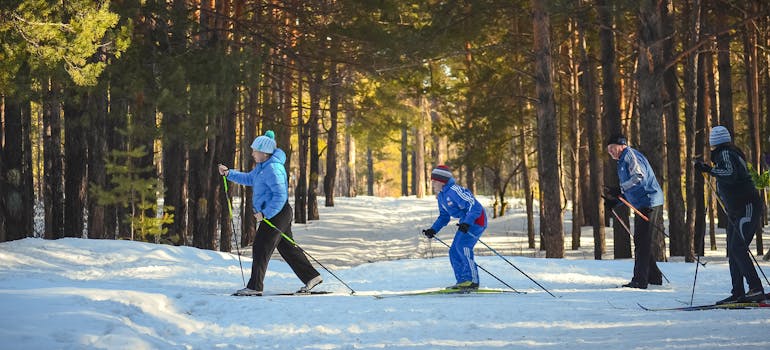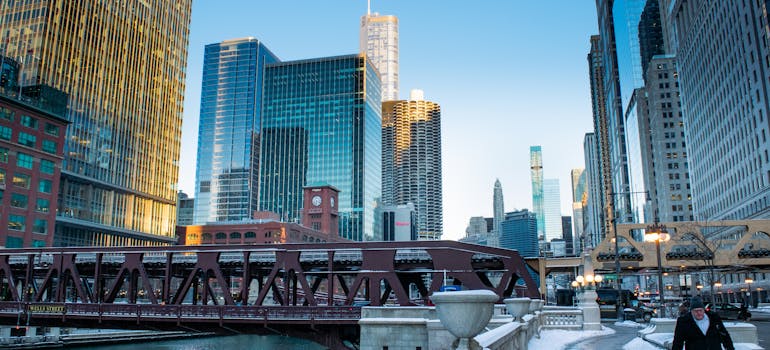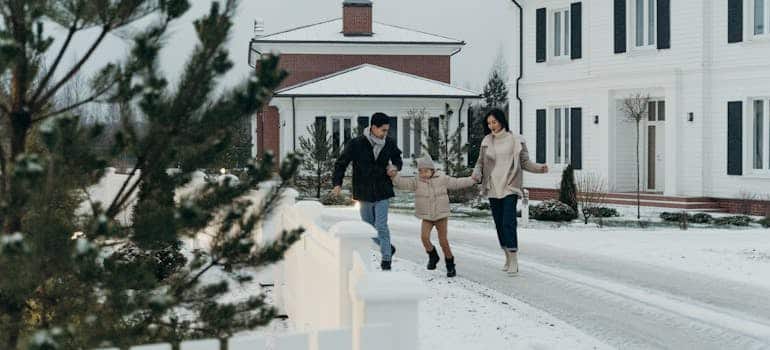Moving to a colder climate brings its own set of challenges. For Floridians, the change can feel especially stark. Suddenly, you’re dealing with snow, ice, and freezing temperatures. Therefore, preparing ahead is crucial. For example, learning to dress in layers will keep you warm outside and comfortable indoors. Also, understanding how to winterize your car can prevent unexpected issues on the road. Moreover, finding a home with efficient heating becomes a priority. Florida movers often stress the importance of these preparations. After all, adapting to a new environment is key to enjoying the beauty and opportunities it offers. Hence, a well-thought-out plan can make the transition for Floridians moving to cold climates smoother and more enjoyable.
Understanding cold climate challenges
Adjusting to a cold climate involves more than just updating your wardrobe; it touches every aspect of your daily life. For Floridians, the shift can impact health, daily routines, and even leisure activities. Thankfully, with the right preparation and mindset, these challenges can turn into new opportunities. Providers of relocation services Florida often highlight three key areas to focus on:
- Health adjustments: The colder weather can increase the risk of colds and flu. It’s essential to boost your immune system. Eating well, staying active, and getting flu shots are good practices. Also, the lack of sunlight can affect your mood. Using a light therapy box can help combat seasonal affective disorder (SAD).
- Daily routines: Your daily routine will need to adapt to the colder temperatures. This means allocating extra time in the morning to warm up your car or dress in layers. Planning your day around the shorter daylight hours is also wise, especially for outdoor activities.
- Leisure activities: Cold climates offer a new world of activities. Skiing, snowboarding, and ice skating are popular options. For those who prefer indoor activities, museums, indoor sports facilities, and winter festivals can provide entertainment and opportunities to socialize.

Tips for Floridians moving to cold climates in different states
When Floridians move to colder climates with state to state movers Florida, the experience can be a mix of excitement and challenge. Therefore, it’s crucial to research your new home state’s weather patterns. This will help you prepare for the specific conditions you’ll face. For example, learning about snow removal services and winter driving tips is essential if you’re moving to a place with heavy snowfall. Also, consider the local lifestyle. Some areas might have a vibrant outdoor winter culture, offering skiing, ice skating, or hiking. Lastly, don’t forget to update your wardrobe with suitable cold-weather clothing. Woolen layers, waterproof boots, and thermal wear will become your new best friends. With these preparations, you can embrace the cold and enjoy the unique experiences your new state offers.
Moving from Florida to New York
It is certain that moving from Florida to New York offers a blend of challenges and exciting opportunities. The winter in New York is a significant change from Florida’s warmth. For starters, you’ll face cold temperatures that can drop below freezing. Unlike Florida, where winter means a light jacket, in New York, you’ll need insulated coats, boots, and thermal wear. Snowfall is another new aspect. It’s common in New York, leading to snow-covered streets and the need for snow removal services.

However, New York’s urban winter environment also presents unique opportunities that are not found in Florida. The city is known for its stunning winter holiday displays, ice skating at iconic locations like Rockefeller Center, and winter festivals. These experiences offer a chance to embrace the cold in a way that’s both fun and memorable. Navigating this new environment means preparing for the cold and making the most of what the city offers. With the right clothing and an open mind, moving from Florida to New York can be an exciting adventure full of new sights and experiences.
Moving from Florida to Washington
Relocating from Florida to Washington introduces a distinctive lifestyle shift, especially regarding the weather. For example, if you are moving from Florida to Seattle, be aware that its winters are known for being rainy and chilly. This is a stark contrast to Florida’s sunny and warm climate. Instead of the continuous sunshine, you’ll encounter frequent rain showers that necessitate a good waterproof jacket and rain boots as part of your daily attire.
Despite the rain, Seattle and the broader Pacific Northwest offer an incredible outdoor lifestyle that can be enjoyed year-round. The region is home to breathtaking natural landscapes, from lush forests and mountains to stunning coastlines. While Florida offers beautiful beaches and warm waters, Washington presents opportunities for hiking, skiing, and exploring the great outdoors in a cooler, more temperate climate. Embracing Washington’s climate means discovering the beauty of the Pacific Northwest’s outdoors, even in the rain. It’s about learning to appreciate the misty mornings and the greenery that thrives because of the wet weather.
Moving from Florida to Illinois
Moving to Illinois from Florida means preparing for a significant climate shift. Illinois’ winters are famously windy and snowy, quite the opposite of Florida’s mild, sunny winters. For instance, after moving to Chicago from Florida, you will notice the cold wind off Lake Michigan. This change will require a warm, windproof coat and layers to stay comfortable. Also, unlike in Florida, winter attire might just mean a light sweater, snow boots, and thermal gloves.

However, Illinois offers unique experiences during the colder months that Florida cannot. Chicago’s rich cultural scene comes alive in winter with festivals, museums, and indoor events that draw locals and visitors alike. While Florida boasts outdoor activities all year round, Chicago invites you to explore its indoor cultural richness. From the Art Institute of Chicago to vibrant theater productions and cozy jazz clubs, the city offers countless ways to enjoy its cultural offerings away from the cold. Embracing the move to Chicago from Florida means not just preparing for the change in weather but also exploring the new opportunities it brings. Despite the cold, you’ll find warmth in the city’s bustling community, rich history, and cultural vibrancy.
Moving from Florida to Texas
Relocating to Texas from Florida means adjusting to a different kind of winter. Texas winters are generally mild, but the state can experience sudden cold snaps. This is a change from Florida’s consistently warm climate. In Texas, one day might be warm enough for a light jacket, while the next could require a heavier coat due to a sudden drop in temperature. Adapting to this climate variability requires a versatile wardrobe. Layering becomes key, allowing you to adjust easily to changing temperatures throughout the day. Unlike in Florida, where winter might mean a slight cool down, Texas residents need to be prepared for occasional frosts or even snow, depending on the region.
Moreover, Texas’s vast geography means the weather can vary significantly from one area to another. For instance, the Panhandle might see snow while the Gulf Coast enjoys much warmer conditions. Adapting to Texas’s climate means staying informed about the weather and being prepared for its unpredictability. Moving to Texas from Florida offers the chance to experience a wide range of weather conditions, adding an exciting element to the new chapter of your life.
Preparing your wardrobe
For Floridians moving to cold climates, preparing your wardrobe is key. Providers of packing services in Miami often suggest starting with the essentials: a heavy coat, waterproof boots, thermal leggings, and warm hats. These items ensure you stay warm in your new, colder environment. Next, mastering the art of layering is crucial. Start with a moisture-wicking base layer to keep sweat away. Add a warm middle layer, like a fleece or wool sweater. Top it off with a windproof and waterproof outer layer. This strategy keeps you warm without feeling bulky.

For shopping, look for stores where you can find quality winter gear. Look for sales during the off-season for the best deals. Also, consider online shopping for a wider selection. Brands known for cold-weather gear often have online exclusives and size options. Remember, investing in good-quality winter clothing pays off in comfort and durability, making your transition to a colder climate much smoother.
Winterizing your vehicle
Cold weather demands a car that can handle icy and snowy roads safely. First, ensure your vehicle has the right antifreeze mixture. This prevents the coolant from freezing, protecting your engine. Next, check your tires. Winter tires provide better traction on snow and ice compared to all-season tires. They make a significant difference in your car’s handling and safety.
Additionally, prepare an emergency kit for your vehicle. This kit should include blankets, a flashlight, a first-aid kit, water, and non-perishable snacks. It’s a crucial step for staying safe if you get stranded. When driving in icy and snowy conditions, go slow. It’s the best way to maintain control of your vehicle. Always leave plenty of room between you and the car in front of you. Remember, braking distances can be much longer on slippery roads. By taking these steps, Floridians can adapt their driving habits and vehicles for safe winter travel in their new cold climate.
Finding the right home
Finding the right home in a cold climate requires attention to features that differ from those in Florida homes. Look for good insulation first. It keeps heat in and cold out, making your home more comfortable and energy-efficient. Next, check the heating system. Efficient systems like central heating or radiant floor heating can handle the cold weather without skyrocketing bills. Location also plays a crucial role. Homes situated away from the wind or those with natural sunlight can reduce heating needs. For example, a house with south-facing windows captures more sunlight, providing natural warmth during the day.

Utility costs can be higher in cold climates due to the need for heating. To manage these costs, look for homes with energy-efficient features like double-glazed windows or smart thermostats. These allow for better control over heating and help save money. For instance, a smart thermostat can learn your schedule and adjust the heating accordingly, ensuring you’re not wasting energy when you’re not home. By considering these factors, you can find a home that keeps you warm without straining your budget.
Health and wellness in cold weather
Staying healthy during the cold months is crucial, especially when moving from a warm climate like Florida. Getting flu shots is a great start. They help prevent the flu, which spreads more in cold weather. Also, with less sunlight in winter, vitamin D levels can drop. Taking a vitamin D supplement can counteract this, supporting your immune system and bone health. Seasonal affective disorder (SAD) is another concern in colder, darker climates. Using a light therapy box can mimic sunlight, helping to improve your mood and energy levels. It’s a simple tool that can make a big difference in how you feel during the winter months.

Indoor exercise is more important for staying active. Joining a gym or attending fitness classes are great options. Alternatively, home workouts or yoga can keep you moving without braving the cold. For example, many online platforms offer a range of indoor workout routines that cater to all fitness levels. By focusing on these aspects of health and wellness, you can maintain a balanced lifestyle throughout the colder months.
Floridians moving to cold climates should adjust to indoor socializing
For Floridians moving to cold climates, adjusting to more indoor socializing is key. The shift from Florida’s outdoor lifestyle to indoor gatherings in colder settings might seem challenging at first. Yet, it opens up new opportunities to connect with others. From cozy dinner parties to engaging in indoor community events, the colder months foster a different kind of warmth and camaraderie. Embracing indoor activities, like board game nights or joining a book club, can also enrich your social life. This change encourages creativity in how you meet and spend time with friends, turning the cold season into a time for building deeper relationships. Remember, the warmth of friendship can make even the coldest climates feel a bit cozier.
